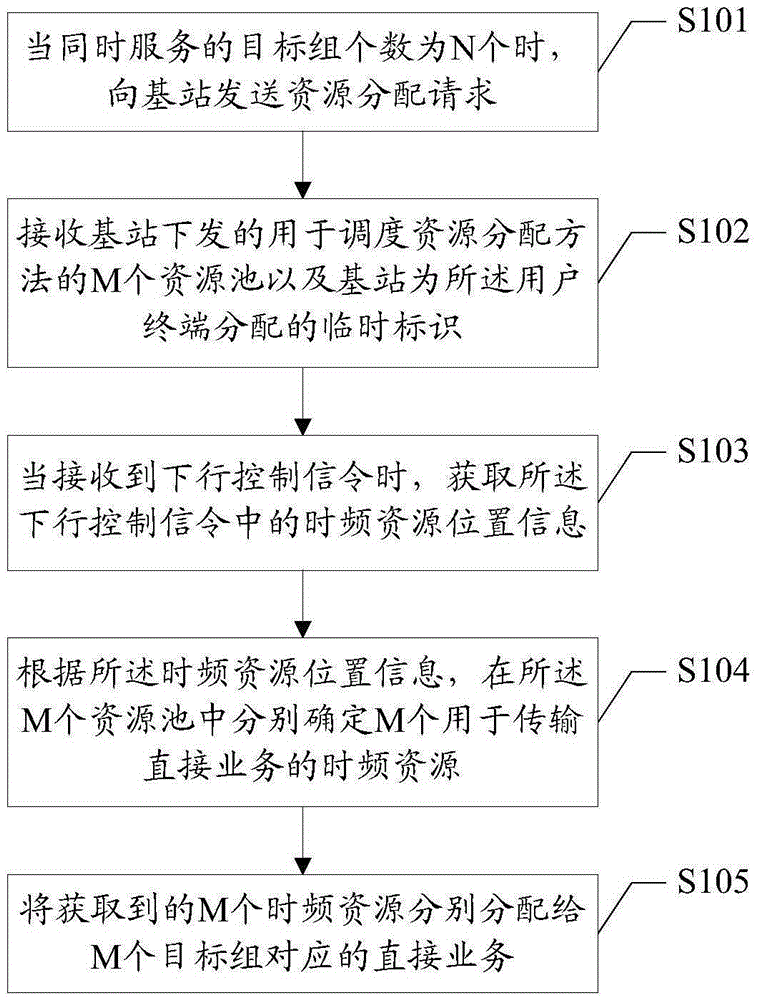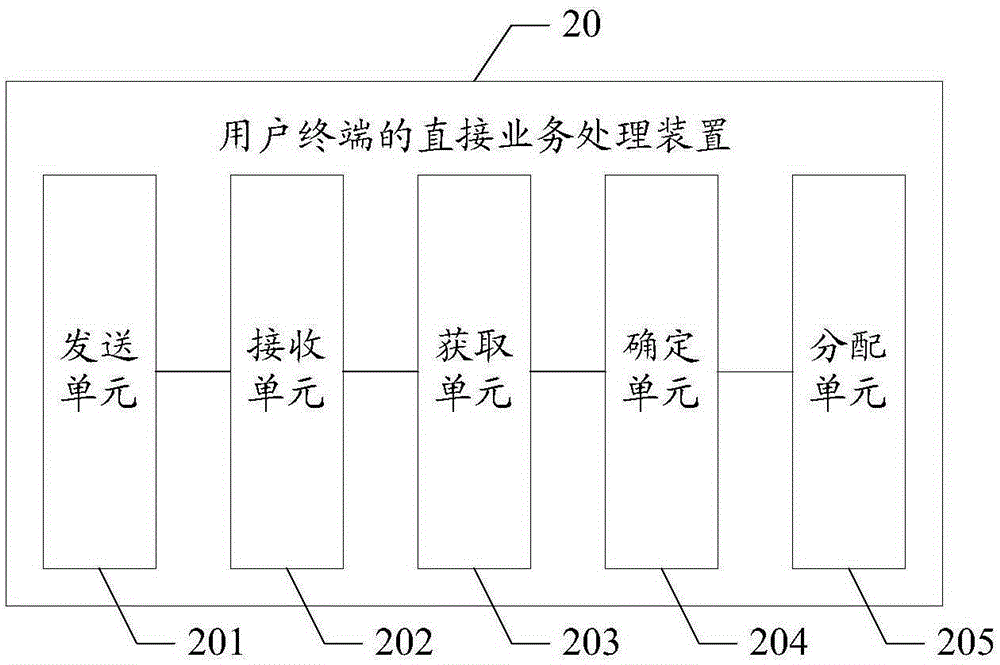Direct service handling method and device of user terminal
A user terminal and business processing technology, applied in broadcast service distribution, wireless communication, electrical components, etc., can solve problems such as inability to transmit direct services, and achieve the effect of improving transmission performance
- Summary
- Abstract
- Description
- Claims
- Application Information
AI Technical Summary
Problems solved by technology
Method used
Image
Examples
Embodiment Construction
[0047] In the existing solution, the base station only allocates a transmission resource for the transmitting UE once in one SC period, or only allows the transmitting UE to automatically select the transmission resource once. The transmitting UE can only send direct services to one target group in one SC period (the number of direct data transmissions can be multiple times, but the data transmitted in one SC period is the same). When the transmitting UE acts as a relay, within one SC period, it can only send direct services to one target group and serve one target group. That is, when the transmitting UE transmits the direct service to one target group, it cannot transmit the direct service to other target groups. When there are many target groups that the UE needs to serve, it can only send direct services to different target groups in different SC cycles in a certain order, and the delay of the direct services of the lower-ranked target groups is longer.
[0048] In the em...
PUM
 Login to View More
Login to View More Abstract
Description
Claims
Application Information
 Login to View More
Login to View More - R&D
- Intellectual Property
- Life Sciences
- Materials
- Tech Scout
- Unparalleled Data Quality
- Higher Quality Content
- 60% Fewer Hallucinations
Browse by: Latest US Patents, China's latest patents, Technical Efficacy Thesaurus, Application Domain, Technology Topic, Popular Technical Reports.
© 2025 PatSnap. All rights reserved.Legal|Privacy policy|Modern Slavery Act Transparency Statement|Sitemap|About US| Contact US: help@patsnap.com


